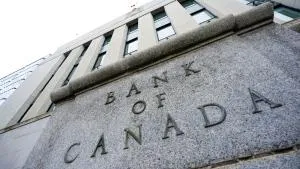
Blog

Bank of Canada Interest Rate Cut
The Impact of the Bank of Canada's Rate Cut: What It Means for You
Yesterday, the Bank of Canada made a significant move by cutting its key interest rate by 25 basis points, bringing it down to 4.50%. This decision comes in response to ongoing economic challenges and aims to stimulate economic growth and stability. But what does this rate cut mean for Canadians and the broader economy? Let’s explore the potential effects.
1. Lower Borrowing Costs
One of the most immediate impacts of the rate cut is the reduction in borrowing costs. For individuals and businesses alike, lower interest rates mean cheaper loans and mortgages. This can lead to increased consumer spending and business investments, as the cost of financing major purchases or expansion plans becomes more affordable.
Homeowners and Homebuyers: If you have a variable-rate mortgage or a home equity line of credit, you might see a decrease in your monthly payments. For potential homebuyers, lower rates can make mortgages more accessible, potentially boosting the real estate market.
Businesses: Companies may take advantage of lower rates to invest in new projects, expand operations, or hire more employees, contributing to economic growth.
2. Stimulating Economic Growth
The rate cut is intended to spur economic activity by encouraging spending and investment. With lower borrowing costs, consumers may feel more confident in making large purchases, such as cars and appliances. Similarly, businesses might be more inclined to invest in capital improvements and new ventures, leading to job creation and increased economic output.
3. Impact on Savings and Investments
While borrowers may rejoice, savers could see lower returns on their deposits. Interest rates on savings accounts and fixed-income investments like bonds typically decrease following a rate cut. This can lead investors to seek higher returns through riskier assets, such as stocks, which can drive up equity markets.
Savings Accounts: Expect lower interest rates on your savings, which might reduce the incentive to keep large sums in traditional savings accounts.
Investment Portfolios: Investors may shift their focus to equities and other investment vehicles that offer better returns, potentially increasing stock market volatility.
4. Currency Fluctuations
Interest rate changes can also affect the value of the Canadian dollar. A lower interest rate generally makes a currency less attractive to foreign investors, potentially leading to a depreciation of the loonie. This can have mixed effects on the economy:
Exports: A weaker Canadian dollar can make Canadian goods and services cheaper for foreign buyers, potentially boosting exports and benefiting export-driven industries.
Imports: Conversely, it can make imported goods more expensive, contributing to higher inflation and increasing costs for businesses that rely on foreign products and materials.
5. Inflation Control
The rate cut aims to address concerns about sluggish economic growth and below-target inflation. By lowering interest rates, the Bank of Canada hopes to increase demand, which can help lift inflation to the desired level. However, there is a delicate balance to maintain; too much stimulation could lead to overheating and higher inflation down the road.
Conclusion
The Bank of Canada's decision to cut interest rates is a strategic move to support economic growth and stability. For individuals and businesses, the immediate benefits include lower borrowing costs and potentially more favorable conditions for spending and investment. However, it also presents challenges for savers and could lead to currency fluctuations. As the effects of this rate cut unfold, it will be crucial for Canadians to stay informed and adapt their financial strategies accordingly.
Location
400-494 Queen St,
Fredericton, NB, E3B 1B6
Office (506) 406-6100
© 2026 Plume Financial Services Inc.
